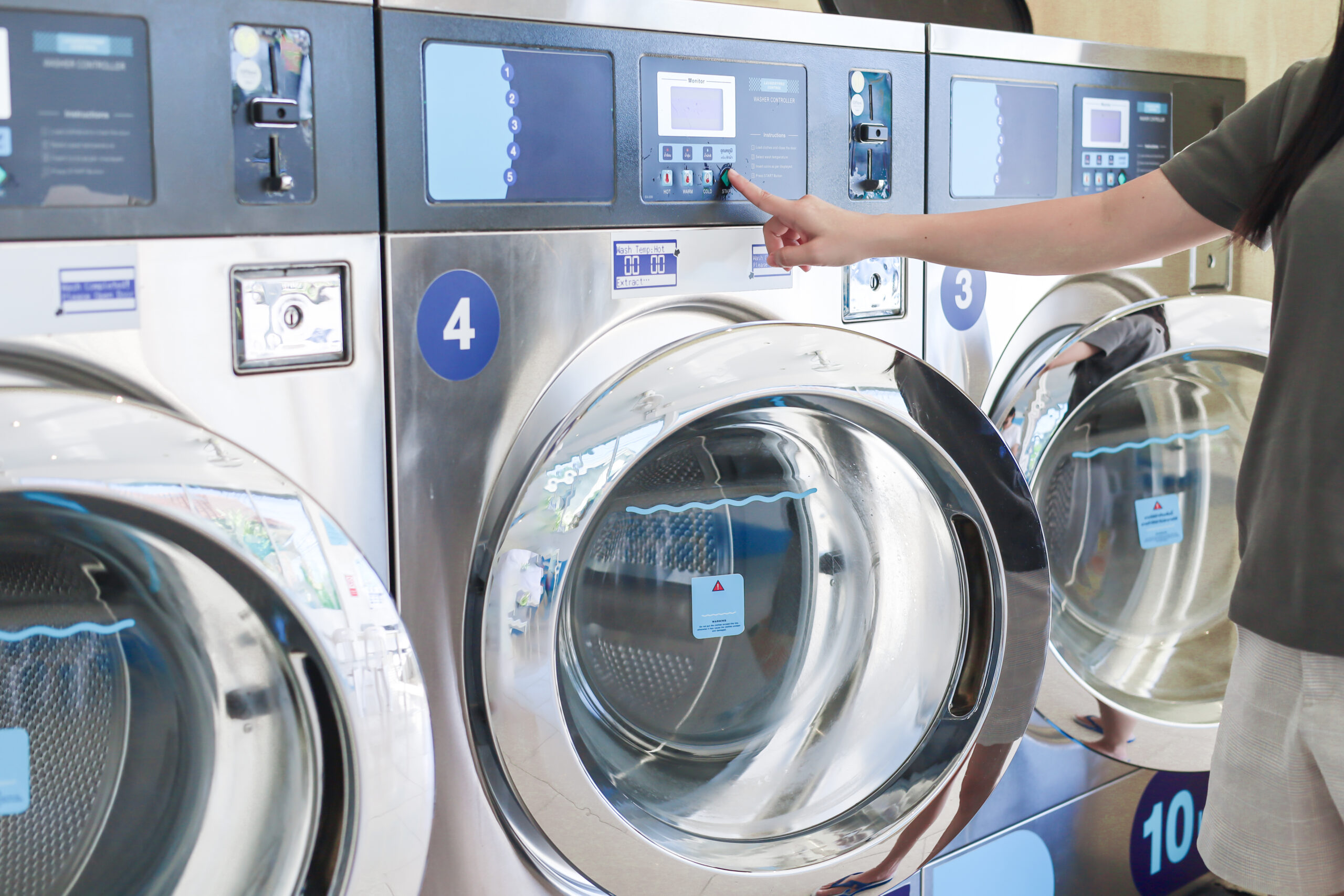The payment system you choose for your washers and dryers is one of the most important decisions you’ll make as a laundromat owner. Today’s laundry businesses are shifting away from coin-only machines in favor of digital, card-based, and mobile payment systems that improve customer experience and simplify operations. Whether you run a fully unattended laundromat or a staffed full-service location, your setup affects revenue tracking, satisfaction, and efficiency.
A modern system streamlines your business and boosts revenue. Customers increasingly expect cashless options like credit cards, mobile wallets, or app-based payments. Owners benefit from reduced coin handling, usage tracking, and remote monitoring. With the right setup, you can also offer loyalty rewards, dynamic pricing, and marketing campaigns. Payment systems now serve as the backbone of operations, connecting your business to real-time insights and automation.
What Is a Washer and Dryer Payment System?
A washer and dryer payment system is the technology used to accept, track, and process payments on commercial laundry equipment. These systems may include:
- Coin-operated mechanisms
- Card readers (debit, credit, or loyalty)
- Mobile payment integrations (Apple Pay, Google Pay, etc.)
- Laundry-specific prepaid cards or QR codes
- Cloud-based reporting dashboards for operators
In essence, your payment system determines how customers pay and how you get paid. Traditional setups relied on quarters or tokens, but newer systems combine coins and digital payments. Many include kiosks or apps where customers load balances, track cycles, or receive rewards. For owners, platforms sync with dashboards for remote monitoring, pricing controls, loyalty programs, and even machine diagnostics.
Why Your Payment System Matters
The way your customers pay affects every part of your laundromat operation:
- Speed and convenience at checkout
- Customer satisfaction and repeat business
- Revenue tracking and financial reporting
- Labor costs associated with cash handling
- Security and theft prevention
- Maintenance and machine uptime
Payment systems are more than a transactional tool—they’re a driver of your brand experience and operational efficiency. Digital payments reduce the need for coin handling, eliminate revenue guesswork, and lower theft risk. A smooth system builds trust and efficiency, while an outdated one causes frustration and lost business.
Types of Washer and Dryer Payment Systems
Laundromat owners have several payment system options to choose from:
- Coin-operated systems: Traditional but declining due to labor and security concerns.
- Card-based systems: Accept debit, credit, or proprietary laundry cards.
- Mobile payment systems: Use smartphone apps, NFC, or QR codes.
- Hybrid systems: Support multiple payment types on one machine.
- Kiosk-based systems: Central terminals for loading cards or selecting machines.
Each payment system has strengths and weaknesses, depending on your location, target customer base, and store model. Coin operated systems are familiar but involve higher labor and maintenance. Card-based systems add convenience and speed, while mobile payments cater to younger, tech-savvy customers who prefer cashless transactions. Hybrid systems provide flexibility during the transition from coin to digital, and kiosks centralize operations. Choosing the right mix ensures your payment options align with customer expectations and long-term goals.
Benefits of Digital Payment Systems
Modern digital systems provide significant benefits to laundromat owners:
- Faster transactions and shorter wait times
- Remote revenue monitoring
- Real-time machine status updates
- Loyalty programs and promo tools
- Dynamic pricing during peak hours
- Reduced cash-related labor and theft
The move to digital payments is about more than just keeping up with trends—it’s about unlocking operational efficiency. For example, remote dashboards allow you to check sales, active machines, and performance from your phone or laptop, even if you’re off-site. Faster customer transactions translate to quicker turnaround and happier guests. Dynamic pricing tools let you offer off-peak discounts or charge premiums during high-traffic periods. With loyalty systems built in, you can reward repeat visits and encourage higher spending per customer. Most importantly, eliminating or reducing cash means fewer collection trips, less time opening machines, and a lower risk of theft or tampering. The efficiency gains alone often justify the switch.
Features to Look for in a Payment System
When evaluating washer and dryer payment systems, consider:
- Ease of use for both customers and staff
- Compatibility with existing laundry equipment
- Support for multiple payment types
- Cloud-based analytics and reporting
- Loyalty, rewards, and promotional capabilities
- Robust customer support and warranty service
Not every system is equal, so research upfront is essential. Choose one intuitive for all users, compatible with your washers and dryers, or plan for upgrades. The best support coins, cards, mobile wallets, and loyalty balances. Analytics and remote access track patterns and plan promotions. Fast, reliable customer support and scalability ensure both short-term revenue and long-term reputation.
Installation and Setup Considerations
Successfully implementing a new payment system involves:
- Evaluating internet connectivity and power needs
- Training staff and providing signage for customers
- Testing machines and payment flows before going live
- Establishing bank accounts or payment processors
- Backing up transaction data for compliance
- Preparing for system updates and ongoing support
Launching a new payment system requires planning but doesn’t have to be disruptive. Ensure reliable internet access, set up banking and merchant accounts, and train your team on common issues. Use clear signage to guide customers and test all scenarios—card swipes, QR scans, and more—before going live. Once operational, maintain regular software updates and data backups for smooth performance.
Hybrid Systems: The Best of Both Worlds
Hybrid payment systems are growing in popularity because they allow:
- Customers to choose coins, cards, or mobile payments
- Easier transition from traditional to digital payments
- Increased customer satisfaction through flexible options
- Reduced friction for first-time or older users
- Simultaneous use of legacy equipment and new tech
- Gradual data collection before full upgrade decisions
A hybrid system gives laundromats flexibility during the transition to full digital operations. Some customers prefer coins, while others expect mobile or contactless payments. Hybrid setups accommodate both groups, offering convenience without alienating anyone. They allow staged upgrades—starting with a few machines before going fully digital—while still providing many advantages of digital tracking and promotions. For many laundromats, hybrids offer a strategic, cost-effective middle ground.
Final Thoughts
Your washer and dryer payment system is more than just a cash box—it’s the gateway to a smarter, more efficient laundromat.
Modern systems improve satisfaction, reduce costs, and give you greater control. Choosing the right setup ensures flexibility, efficiency, and profitability. Laundromats that embrace tech-forward payment systems will stand out and thrive.








